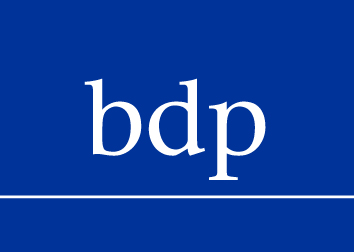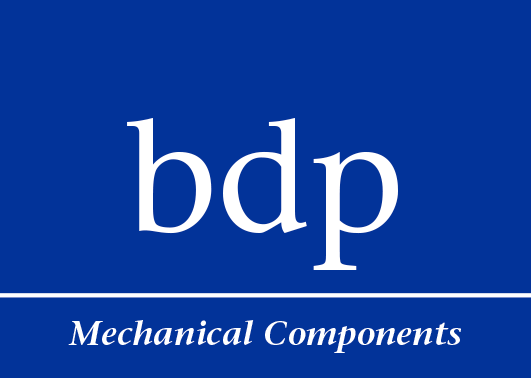Newsletter Abril 2021:
By: Lisa Xu
Translated by: Xiuguo Dong
Process audit
There are a number of challenges to overcome in international procurement, such as cultural and language barriers, lack of customer knowledge about suppliers, insufficient communication and contact with suppliers, and lack of professional staff for process audits. Process and product audits are performed to assess the quality capability of a product/product group and its processes, during product development or serial production development or service implementation. Unlike a system audit, which evaluates the completeness and effectiveness of the basic requirements of the quality management system, the product audit is used to evaluate the quality characteristics of product.
The purpose of process audit is to verify that the factors influencing the production process and its control methods meet the requirements for process control / process capability in order to achieve prevention, correction as well as continuous improvement and to ensure that the process quality is stable and under control.
For the automotive industry, the evaluation criteria are based on VDA 6.3 as the audit standard. For both types of process audit, planned and unplanned, there are different clauses with different focuses. The planned audits are mainly project-related and focus on part 2 (P2: project management), part 3 (P3: planning of product and process development) and part 4 (P4: realization of product and process development). The unscheduled audits are mainly event-related and focus on part 5 (P5: Supplier management), part 6 (P6: Production process analysis) and part 7 (P7: Customer care / customer satisfaction / service). From part 5 onwards, production control is transferred from project to series production.
Usually some customers also conduct a risk audit before selecting a supplier, again based on the provisions of VDA 6.3.
In other industries, VDA 6.3 is sometimes used directly as an audit standard. There are companies that have created their own audit forms for the different industries and product types, focusing on the emphasis of the conditions to be audited and the details of the topics.
Regarding the planning and frequency of process audits, they are usually determined during the development of the annual quality management plan, depending on the importance of the supplier’s product, or the size of the purchase, the size of the supplier and other factors. For similar safety parts, quarterly audits of key production processes are generally conducted. For regular products, formal audits are conducted at least once a year.
To conduct an effective audit, the following areas require special attention:
- To prepare for an audit, you need to know the supplier’s current status, such as key production processes, products manufactured, industry, life span, previous quality issues as well as current quality performance, any new projects underway at that time, and plans for future collaboration.
- You need to know the key contacts for supplier audits as well as the internal organizational structure and communication methods to enable effective information transfer.
- Under normal circumstances, the supplier must have conducted a good internal audit. Make sure that the employees in the relevant departments of the supplier know the audit requirements and keep an eye on the process control. The form of internal audits is not limited. If the supplier has a good tiered audit mechanism, the results of its regular audits can be viewed. If the supplier has no control in this area, a template of the audit report can be sent to them for review.
- In order to avoid that suppliers do not only formally prepare for audits, unannounced audits are also a common form of auditing. However, the prerequisite is that the supplier has been formally informed at the time of the annual audit planning that a rolling audit will take place in the current year.
- The first meeting is a necessary part before the official start of the audit. The main task is to explain the content of the audit clearly and to communicate the audit plan to the responsible person of each department of the supplier in the function of an external auditor.
- On the project side, attention must be paid to the organizational structure of the project management team at the supplier. For example, if the supplier’s sales team cannot internally mobilize the resources of the technical team to provide quick and professional feedback on prob-ems, it is necessary to clarify theresponsibilities of each person and the specific work task progress in the audit, find the most critical gaps and communicate clearly with the re-relevant personnel on site. It is preferable to ensure with the supplier the possibility to communicate directly with the technical team about important technical problem nodes.
- For process sites, make sure to cover the entire process and focus on the critical processes:
- In principle, technical requirements and associated specifications must be clear and easily accessible. Test tools must also be complete. Examples of specifications are operating instructions, test instructions, packaging specification, control plan, drawing, test record sheet, etc.
- Pay attention to discrepancies. Does the actual operation agree with the operating instructions? Are the test methods and frequency consistent with the test instructions? Do test results agree with drawing requirements? Are n.o.s. products identified and isolated, collected for PDCA improvement, and implemented for improvement? Are all control requirements and response mechanisms consistent with the control plan to ensure controlled operations? If there are inconsistencies, have change approvals been obtained from the customer prior to implementation?
- Keep an eye on the statistics. Are there relevant internal quality defect statistics? Review the analysis to understand the top five error types and their trends. Confirm if there have been any customer complaints in the past. Understand the types of defects and their trends, etc. What tools are used for the improvement report? Is there a clear and accurate record of changes, etc. in relevant control documents?
- Attention shall be paid to the control of third party or purchased parts, including incoming inspection of suppliers, such as critical outsourcing processes. Sub-suppliers shall be visited on site to see relevant process control, such as wire cutting process, annealing process, galvanizing, painting, etc.
- Pay attention to the method and validity of inspection. For the coordinate measuring machine (CMM), you need to know whether the modeling and inspection are in accordance with your specifications, what is the accuracy of the CMM, what is the calculation method of the internal programs, and what are the deviations with your inspection results. For the inspection equipment manufactured by the supplier, results of regular measurements must be available. For the most important dimensions specified by you, whether the measurement system and process capability have been analyzed by the inspection equipment. For dimensions that do not meet the required process capability indices, is 100% inspection performed by professional personnel? It is also necessary to actually view and verify past inspection results on site, including a review of products inspected by operators or inspectors, or a sample of products directly from the work station or from stock.
- Process-related aspects in the system must be taken into account. Examples are: the ability and skill of the operators; maintenance, repair records and life of the models and fixtures, plan for the production of new models, the product flow in the whole process (e.g. from which station to which station the product passes, number of products in the run, scrapping situation), the inventory of inspection tools and test equipment, sufficient resolution of this equipment, completion of calibration, etc.
- Pay attention to communication. On the one hand, it is a matter of obtaining relevant information from communication with on-site personnel. On the other hand, for the problems found, it is necessary to communicate clearly with on-site personnel and subsequent auditors so that they clearly understand where the problems lie and ambiguities about the issues raised by the audit can be avoided, even after leaving the workplace.
- All audit points must be clearly communicated to the supplier at the final meeting and ideally recorded in writing and sent to the supplier for confirmation. Any action items with which you disagree should also be communicated at the meeting. Preferably, the supplier’s management should attend the final meeting so that they are aware of the audit issues and can support improvements.
- After the audit, a formal audit report must be prepared within one week, recording the results of the relevant improvement actions and setting a date for the review of the actions to be completed.
bdp offers you services around process audits and the associated tasks.
- Audits and inspections for companies working together for the first time, such as po-tenial supplier risk audits.
- Accompanying production control of samples and small batches in ongoing projects, such as PPAP certification.
- Monitoring the stability of serial production to the inspection before shipment of each consignment.
- Regular process audits, system audits, product audits and audits of subcontractors for special processes during series production.
- Provide on-site support and resolution of unexpected quality issues, analyze and resolve problems and produce professional 8D reports, and mentor suppliers in a full PDCA cycle of improvement.
Remark of bdp MC: The actual situation in a process audit can be more complex than you think, as more factors are involved. Our team can represent you locally and perform professional process audit services in China and Eastern Europe.



